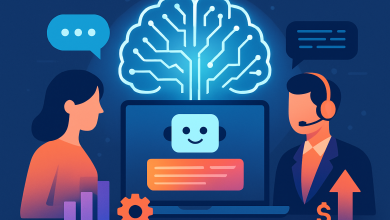
Cloud environments today are expanding faster than human teams can govern them. Enterprises are managing thousands of services across multiple providers, geographies, and business units. Each change introduces new risks, costs, and compliance questions. Legacy governance models, built for static infrastructure and slow release cycles, are buckling under the pressure. Into this chaos steps a new class of technology: agentic systems that don’t just monitor the cloud, they act on it. These intelligent agents are transforming cloud governance from a manual, reactive process into one that is far more powerful and proactive. Autonomous, adaptive, and built to scale. But what challenges do they present?
What Is Autonomous Cloud Governance?
First, we need to define autonomous cloud governance. The term refers to a system in which policies, controls, and compliance rules are enforced automatically, without requiring constant human supervision. Instead of manually auditing configurations or responding to alerts after the fact, cloud environments that are governed autonomously can self-correct, optimize, and adapt in real-time based on predefined rules and learned behavior.
Agentic technologies are at the heart of this evolution. These are systems often powered by AI or policy-driven agents that can make decisions, take action, and evolve with minimal human input. In the cloud context, that means agents can provision infrastructure, shut down non-compliant resources, enforce access controls, or even recommend architectural changes based on observed usage patterns.
This shift is closely linked to the rise of agentic computing, where AI-driven agents act on behalf of governance teams to analyze data, apply policies, and make context-aware decisions without human intervention in routine scenarios.
This evolution, in my opinion, will unfold through a layered framework. At the foundation are declarative policies, where organizations define desired states for compliance, resource usage, and security. On top of that sits autonomous enforcement, where rules are applied automatically through AI or event-driven systems. Finally, continuous learning mechanisms adapt governance over time by learning from real-world incidents and operational patterns.
This approach transforms governance from a reactive and manual discipline into a proactive and adaptive one, capable of keeping pace with the speed of modern cloud innovation. At the same time, I remain cautious about over-reliance on automation in areas where regulatory interpretation, ethical decisions, or complex trade-offs are required.
From Rules Engines to Self-Governing Systems
Traditional cloud governance tools have mostly operated like checklists or rules engines. They flag violations, generate reports, or issue alerts, but the burden of remediation still falls on human teams. This model creates lag, risk, and burnout in large-scale environments.
Agentic governance flips that dynamic. Rather than relying on humans to enforce policy, systems themselves can become enforcers. For example, an agent can:
- Monitor resource tags in real time and automatically decommission anything untagged after a certain time window
- Identify cost anomalies and proactively throttle unnecessary workloads
- Enforce zero-trust networking principles by adjusting firewall rules based on shifting access patterns
An early example of this trend can be seen in Google’s Autopilot mode for GKE, which automatically adjusts resource allocations and enforces best practices for Kubernetes clusters. Similarly, platforms like Cloud Custodian and Stacklet are giving enterprises policy-as-code frameworks that can be wired into autonomous workflows.
Agentic governance offers a way to keep pace without compromising control. Policies become living systems. They are now capable of enforcing standards in real time and learning from patterns to improve over time.
Design Considerations: Building Trustworthy Agents
Of course, the shift to autonomous governance comes with design challenges. Not every decision should be delegated to an automated agent, especially in environments with regulatory or compliance requirements.
To design trustworthy agents, cloud leaders should consider:
- Boundaries of Autonomy: Define clear thresholds for when an agent can act independently versus when human approval is needed.
- Observability: Ensure every action taken by an agent is auditable, explainable, and tied back to a policy or rule.
- Feedback Loops: Create systems where agents learn from outcomes and can be tuned by human operators.
- Fail Safes: Build fallback mechanisms in case an agent takes an unexpected or undesired action.
This is where the distinction between autonomous and agentic becomes important. Agentic systems are designed to exhibit adaptive, goal-driven behavior. This adds power, but also complexity.
Trustworthy automation requires clear boundaries of autonomy, strong observability, and reliable feedback loops that ensure agents act within defined policies. Fail-safes are equally important to maintain control if an agent’s behavior deviates from expectations. While automation is well-suited for enforcing policies and managing routine operations, certain responsibilities should never be delegated. Regulatory compliance decisions, ethical considerations, and sensitive data governance must remain under human oversight to ensure accountability and trust.
The Future: Cloud Platforms That Govern Themselves
Looking ahead, cloud platforms may evolve from passive infrastructure into adaptive ecosystems that can govern themselves. We are already seeing early signs of this in the form of intelligent policy engines, machine learning optimization tools, and real-time security agents.
The vision is not to eliminate human governance, but to elevate it, freeing up engineering and security teams to focus on strategy rather than reactive enforcement.
Over the next three to five years, I envision cloud platforms maturing into self-governing ecosystems where policy enforcement, security monitoring, and performance optimization occur autonomously in real-time. This evolution will free engineering and security teams from repetitive, reactive tasks, allowing them to focus on higher-order strategic priorities, such as innovation, risk modeling, and user trust.
Agentic technologies are pushing the boundaries of what cloud governance can be. By learning from past patterns, acting in real time, and adapting to new challenges, these systems offer a path to more innovative, safer, and more scalable cloud operations. The key is in designing them with intent, all while balancing autonomy with accountability, and innovation with trust.
Karthik Reddy Alavalapati is a polyglot software engineer and strategic technology thought leader at a leading U.S. bank, with nearly two decades of experience helping Fortune 100 companies modernize their applications and implement next-generation distributed systems architectures. He leverages expertise in data architecture, regulatory compliance, and cloud technologies to design scalable data pipelines and governance frameworks that deliver multimillion-dollar efficiencies. A frequent contributor to technical articles and white papers, he drives innovation by applying AI-powered anomaly detection, self-healing infrastructure, and machine learning to transform payment systems.





